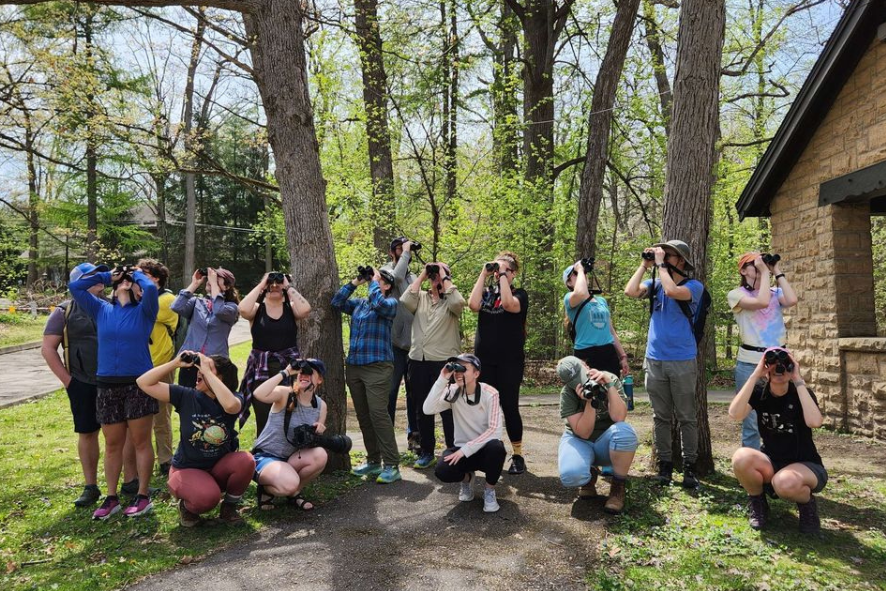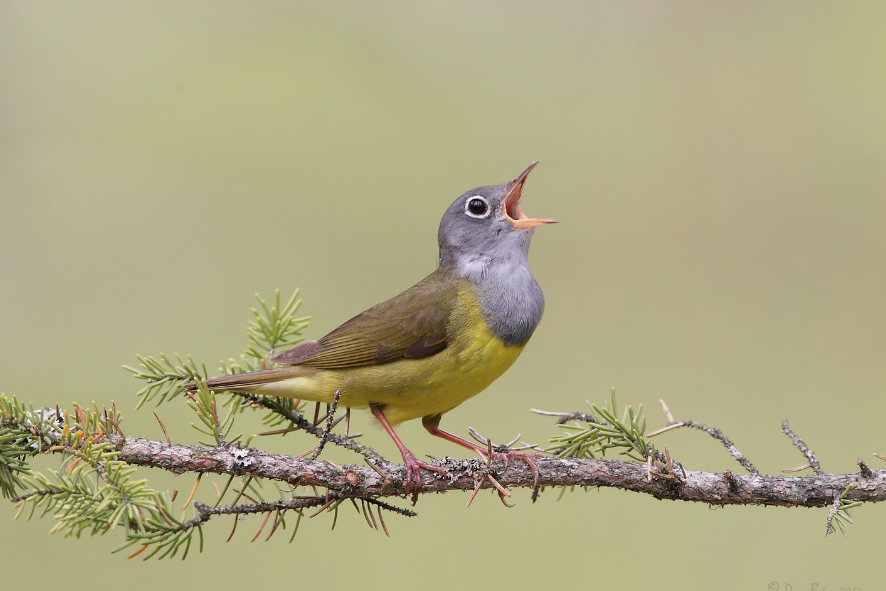The Bird Protection Fund
The Bird Protection Fund supports the highest priority conservation needs for Wisconsin’s birds throughout their lifecycle – from their breeding grounds in Wisconsin to their migratory habitat in Central and South America.
Projects supported by the Bird Protection Fund include conservation of Wisconsin’s most threatened and endangered bird species; creation and protection of critical breeding, stopover, and overwintering habitat; research and monitoring; and education and outreach.
Grantmaking Priorities:
- Projects that directly address high priority conservation needs for Wisconsin’s birds.
- Projects that align with state, regional, and national bird conservation plans and strategies.
- Projects that leverage resources and partnerships.
How to Apply:
- This program does not accept unsolicited proposals.
2023 Projects
1. Advancing Bird Conservation within Wisconsin’s Important Bird Area System
Wisconsin’s Important Bird Area (IBA) system brings partners and stakeholders together to coordinate and plan management, stewardship, and monitoring activities that will benefit vulnerable bird species, ensuring access to essential habitat. Funds will provide financial and technical support for IBA partnerships that address widespread bird population declines. Partner: Wisconsin Bird Conservation Partnership
2. Audubon Conservation Ranching
Audubon Great Lakes is working to improve grazing and grassland habitat management practices across at least 12,590 acres in Wisconsin. This project will prioritize farms within Important Bird Areas, Wisconsin Grassland Bird Conservation Areas, and priority areas identified in the Wisconsin State Wildlife Action Plan. Partner: Audubon Great Lakes
3. Bird Conservation for All
The BIPOC Birding Club of Wisconsin hosts monthly birding events in Madison and Milwaukee and special events around the state that bring BIPOC (Black, Indigenous, and People of Color) and allies together to enjoy and experience the birds and natural wonders of Wisconsin. This year’s grant will support their efforts to get new birders from all backgrounds interested in birding and bird conservation, as well as the distribution of birding “kits” to neighborhood centers and schools in low-income areas of Madison and Milwaukee. Partner: BIPOC Birding Club of Wisconsin
4. Change is Hard: Making Bird-friendly Actions Easy in Lakeside Communities
Birds face significant challenges in urban, suburban, and ex-urban landscapes. While migrating along the shores of Lake Michigan, birds must use these makeshift habitats, making bird-friendly actions even more critical in lakeside communities. This project aims to make bird-friendly actions more approachable for communities by understanding their motivations and barriers to action, and building tools and outreach programs based on this understanding. Partner: Lake Michigan Bird Observatory
5. Grassland Expansion at Mounds View Grassland Preserve
Mounds View Grassland is part of an important effort to protect grassland ecosystems on a landscape scale in an area with a lot of potential to realistically recover and maintain these ecosystems. This year’s funding will improve 242 acres of habitat for grassland birds at Mounds View, such as upland sandpipers, meadowlarks, bobolinks, dickcissels, Henslow’s sparrows, short-eared owls, and rough-legged hawks. The funding will also help restore 8 acres of oak savanna for red-headed woodpeckers and other savanna birds; and retain a dozen or so small scattered thickets of native shrubs for Bell’s vireos, willow flycatchers, and other brush thicket birds. The long-term goal is to slowly convert to native prairie and savanna. Partner: The Prairie Enthusiasts
6. Lincoln Creek Habitat Research and Restoration
Nearby Nature is committed to restoration and revitalization of green spaces along Lincoln Creek in Milwaukee. Funding will support bird and wildlife monitoring activities and equipment at their “Hopkins Hollow” focus area. Along Lincoln Creek, 85% of neighborhoods are in “Qualified Census Tracks” (neighborhoods with high poverty rates). Local students and community members participate in wildlife monitoring activities, invasive species removal, and planting of native species. Partner: Nearby Nature
7. Long-term Bird Monitoring at Restoration Sites on the Oneida Nation
This collaborative volunteer bird monitoring program co-led by Northeast Wisconsin Audubon has an impressive track record of surveying birds at important sites on the Oneida Nation reservation’s restoration sites. This year’s funding will support migratory shorebird and waterfowl surveys, and breeding bird surveys in grasslands, forests, marshes, and grazing lands. It will also help provide land management guidance to the Oneida Nation, expand understanding of what constitutes bird conservation though a formalized Oneida cultural exchange, and connect Oneida and non-tribal communities. Partner: Northeast Wisconsin Audubon
8. Neotropical Flyways Project
This expansive research effort seeks to identify and protect critical stopover regions in Central and South America used by Wisconsin’s migratory birds. Stopover sites are identified and mapped, and mist-netting and radio-tracking of birds reveal how they use these sites. This year, funds will support expansion of the effort into Belize. Partner: SELVA
9. Piping Plover Conservation
Piping Plovers are a federally endangered species that rely on habitat on the shores of the Great Lakes. Funds will focus on habitat management and creation of potential breeding sites, monitoring of nesting pairs, and banding of chicks at Cat Island in northeastern Wisconsin. Partner: Wisconsin Department of Natural Resources
10. Taking Action to Save Birds
Songbirds have been declining, but there are some simple ways the public can help change that. SOS Save Our Songbirds is a communications and outreach campaign that encourages people throughout Wisconsin to plant native plants for birds, prevent window collisions, choose bird-friendly coffee, and more. Partner: SOS Save Our Songbirds
11. Whooping Crane Reintroduction
Conservation partners are working hard to reintroduce the critically imperiled whooping crane, one of the rarest birds in North America. The Bird Protection Fund is supporting the International Crane Foundation’s efforts to monitor the existing wild population, raise and release captive chicks with the goal of establishing a self-sustaining migratory population, and continue community education and outreach to protect this species. Partner: International Crane Foundation
BIRDERS HELPING BIRDS
[August 15th, 2023] Over $122,000 raised by birders during the 2023 Great Wisconsin Birdathon will fund the state’s 11 most important bird conservation projects.

Great Wisconsin Birdathon
Ways to Give
- You can help us help the birds by making a donation to our Bird Protection Fund.
- Consider making a gift to the Birds of Wisconsin Legacy Fund, an endowment fund that provides sustainable funding for priority projects of the Bird Protection Fund.
- A majority of the funds raised through the Bird Protection Fund come from the Great Wisconsin Birdathon annual fundraising event. Help out by forming a team to count birds and raise money for bird conservation.

Lindsey Taylor
Conservation Coordinator
(608) 409-3145
Lindsey.Taylor@WisConservation.org
Lindsey Taylor (she/her) supports the Foundation’s conservation programs, including coordinating our grant programs, initiatives, and partnerships that benefit Wisconsin’s lands, waters, and wildlife.
Banner photo by Hillary Thompson.
Great Wisconsin Birdathon photo by Caitlyn Schuchhardt.

